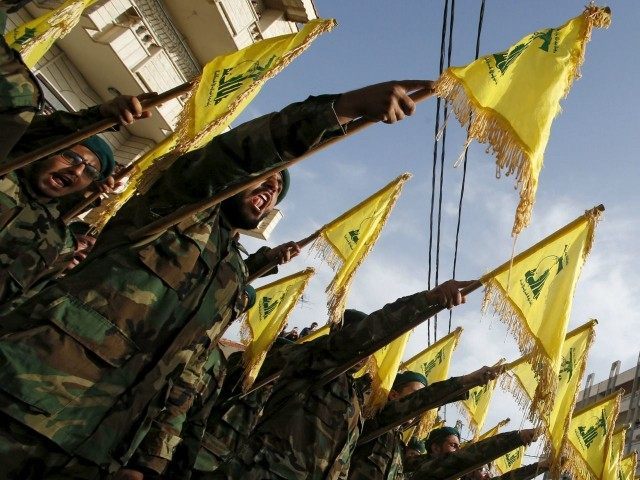Well they have to get money somewhere else too. It can't only be Iran.

REUTERS/Ali Hashisho
by EDWIN MORA12 Jun 201611
WASHINGTON, D.C. — Iran’s Lebanese proxy Hezbollah is generating hundreds of millions from a “cocaine money laundering scheme” in Latin America that “provides a never-ending source of funding” for its terrorist operations, a former DEA operations chief recently told U.S. lawmakers.
The official comments came nearly a week after the U.S. State Department reported that Latin America and the Caribbean “served as areas of financial and ideological support” for the Sunni Islamic State (ISIS/ISIL), Shiite Hezbollah, and other Islamic terrorist groups from the Middle East and South Asia.
Michael Braun, the former federal law enforcement official, was one of three terror financing experts who told the House Financial Services Committee on June 8 that Hezbollah’s narco-terrorism operations in the Latin American region were flourishing.
“The global drug trade generates hundreds of millions of dollars each year in contraband revenue for Hezbollah and it provides a never-ending source of funding for their war chest,” he testified in his prepared remarks. “Hezbollah uses cocaine, other drugs and other contraband as an alternative form of currency. And they have used drugs as payment for information and to successfully corrupt Israeli Defense Force personnel, as well as soldiers in other militaries.”
A recent DEA investigation revealed that the Lebanese-Canadian Bank alone was “facilitating a [Hezbollah] cocaine money laundering scheme involving as much as $200 million per month,” added Braun, who now serves as the managing partner of the government contractor SGI Global that he co-founded.
Continue reading at:
Former DEA Chief: Hezbollah 'Moving Tons of Cocaine'
- Former DEA Chief: Hezbollah ‘Moving Tons of Cocaine’ Out of Latin America

REUTERS/Ali Hashisho
by EDWIN MORA12 Jun 201611
WASHINGTON, D.C. — Iran’s Lebanese proxy Hezbollah is generating hundreds of millions from a “cocaine money laundering scheme” in Latin America that “provides a never-ending source of funding” for its terrorist operations, a former DEA operations chief recently told U.S. lawmakers.
The official comments came nearly a week after the U.S. State Department reported that Latin America and the Caribbean “served as areas of financial and ideological support” for the Sunni Islamic State (ISIS/ISIL), Shiite Hezbollah, and other Islamic terrorist groups from the Middle East and South Asia.
Michael Braun, the former federal law enforcement official, was one of three terror financing experts who told the House Financial Services Committee on June 8 that Hezbollah’s narco-terrorism operations in the Latin American region were flourishing.
“The global drug trade generates hundreds of millions of dollars each year in contraband revenue for Hezbollah and it provides a never-ending source of funding for their war chest,” he testified in his prepared remarks. “Hezbollah uses cocaine, other drugs and other contraband as an alternative form of currency. And they have used drugs as payment for information and to successfully corrupt Israeli Defense Force personnel, as well as soldiers in other militaries.”
A recent DEA investigation revealed that the Lebanese-Canadian Bank alone was “facilitating a [Hezbollah] cocaine money laundering scheme involving as much as $200 million per month,” added Braun, who now serves as the managing partner of the government contractor SGI Global that he co-founded.
Continue reading at:
Former DEA Chief: Hezbollah 'Moving Tons of Cocaine'

